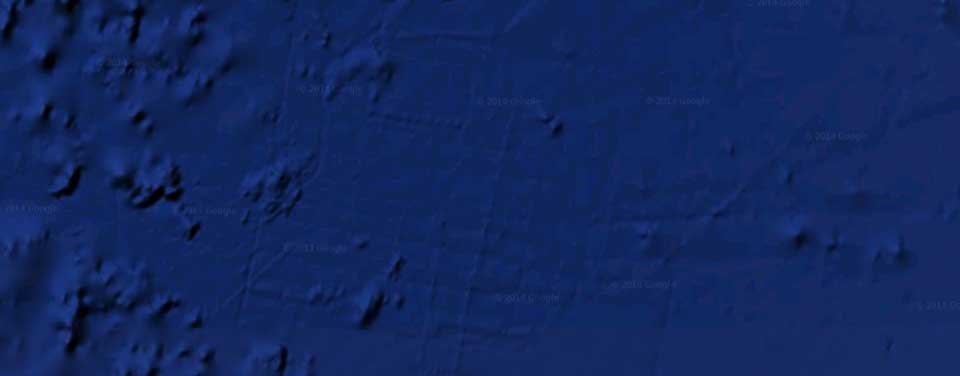Did I find the lost underwater civilization of Atlantis?
Unusual grid patterns seen on maps of the ocean floor are created by ships taking higher-resolution sonar readings — to create better maps!

The lines seen here show the paths taken by ships using sonar to map small sections of the ocean floor in greater detail. The gridded-section shown above may look like streets in a small town, but is over 100 miles wide. The area above is one of the more frequently cited 'underwater city' locations in online lore. It's a spot northwest of the Canary Islands in the Atlantic Ocean located at the following coordinates: 31º15'15" N, 24º 15' 30".
With the advent of online mapping tools such as Google Earth, exploring our planet is easier than ever before. Recently, many of these tools have been updated to provide detailed seafloor mapping data, or bathymetry.
With legions of people around the world now exploring the seafloor, many are noticing locations along the ocean bottom marked by mysterious formations of grid-like artifacts. These formations look like they were made by humans, leading many to ask if these areas could be lost cities or underwater streets.
While these formations are human-made, they are only made of data. In other words, there are no physical lines on the ocean floor. These lines are artifacts of the ocean floor mapping process.
Oceanographers use sonar—sound waves—to map the ocean bottom. These sonar readings are typically taken by ships towing submersible devices that send out sound waves. The sound travels through the ocean, bounces off the seafloor, then travels back to the ships. This process creates a sound 'image' of the peaks and valleys on the ocean bottom.
NOAA is just one of many agencies around the world that uses sonar to 'see' what the seafloor looks like. Some of these surveys of the ocean bottom cover small areas in great detail. Other surveys are broad-brushed, showing vast areas at low resolutions.
Online mapping tools take these many different sonar surveys created by a variety of agencies and organizations, stitch them together, and pile them up on top of each other in layers. Taken together, these sonar maps provide a seamless picture of what the ocean bottom looks like around the globe. However, some areas appear in more detail than others.
When you see strange grid-like formations on the seafloor while using an online mapping tool, what you are really seeing is two (or more) different maps layered on top of each other. One map may show a large, low-resolution picture of the ocean floor. This map will show little detail and will look smooth. The other map, or 'data set,' often looks like a bunch of grid-like lines overlaying the smooth, low-detail map. The path of the lines show the paths traveled by the ships that gathered these higher-resolution sonar readings of smaller patches of the ocean.
Search Our Facts
Get Social
More Information
Last updated: 06/16/24
Author: NOAA
How to cite this article